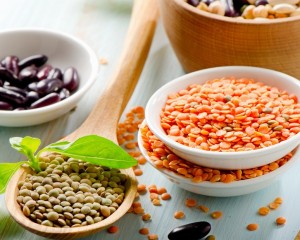Natural Benefits & Curative Properties of Pulses!!
Pulses belong to the family of peas, beans and lentils. These are defined as the dried edible seeds of cultivated legumes. Pulses are cultivated in all parts of the world and they make a very important part of the daily diet. In India who are vegetarian, pulses and lentils are the main part and source of daily protein and energy.
Pulses are dried edible seeds of cultivated legumes. Pulses contain more protein than any other plant. They serve as a low cost protein to meet the need of people. That’s why these are considered as the meat for the poor men.
Nutrient content
- In general pulses have 20 to 30 percent of protein per 100 gm. except soya beans which has almost 50 percent of protein per 100 gm.
- Carbohydrate is about 6o percent per 100 gm. except soya beans that is only 30 percent per 100 gm.
- Pulses are also rich in calcium, phosphorus and iron. 100 gm. Of pulses contain 345 kcal energy, 24.5gm protein, 140 mg calcium, 300 mg phosphorus, 8mg iron.
Natural Benefits and Curative Properties of Pulses –
- The nutritive properties of the pulses resemble in many respects those of the whole cereal grains but there are important differences.
- Pulse protein is low in Sulphur containing amino acids but really rich in lysine in which many cereals are deficient.
- Combination of pulses and cereal proteins may create a wonderful nutrition as equal to animal protein.
- Pulses are good source of vitamin B group except riboflavin. Therefore they are wonderful to prevent from beriberi.
- All these are devoid of vitamin C. Large amount of vitamin C or Ascorbic acid is found on germination. Sprouted pulses are thus very important part of food that is rich in vitamin C and prevent us from scurvy.
- The digestion of pulses and the absorption of their principal nutrients is practically complete and nearly as effective as is the assimilation of cereals. Their digestion may however be incomplete in Gut disorders. Only small quantity of well-cooked pulses should be therefore included in the diet of patients having stomach of other GIT disorders.
- Pulses are used to make daal which is a main part of food in north India. It can be taken with roti or rice. Pulses are with husk and dehusked. With husk take bit more time to cook than dehusked.
- Pulses are also used to make powder and used as flour like Bengal flour, black gram flour etc. used to make chapatis also called as bread which is used in daily routine in India.
- Sprouting is another way to have more nutrition from pulses. Green gram, black gram are most commonly used to have as it is or used in salad with other vegetables or sometimes used to make dishes. During sprouting starch is broken down to dextrin and maltose and proteins are broken down to peptides, polypeptides and amino acids. Vitamin C also rises from the level of negligible. Niacin and riboflavin also increases and all these changes take place due to the enzymes which become more active during germination.
Disclaimer:-
For specific treatment, always consult an Ayurveda expert.
This article is not a substitute to the standard Medical Diagnosis or personalized Ayurvedic Treatment.
It is intended only for Information!
11,058 total views, 2 views today
